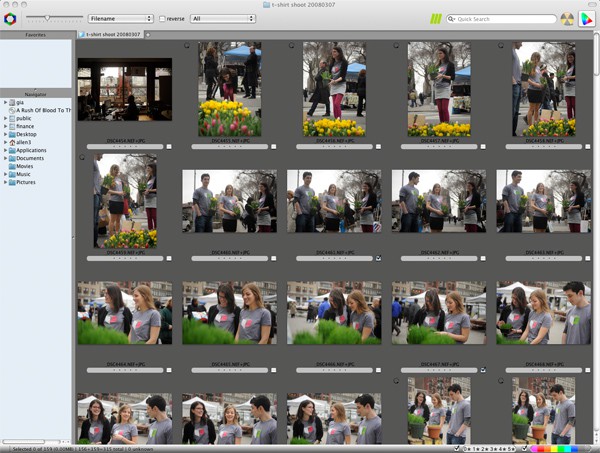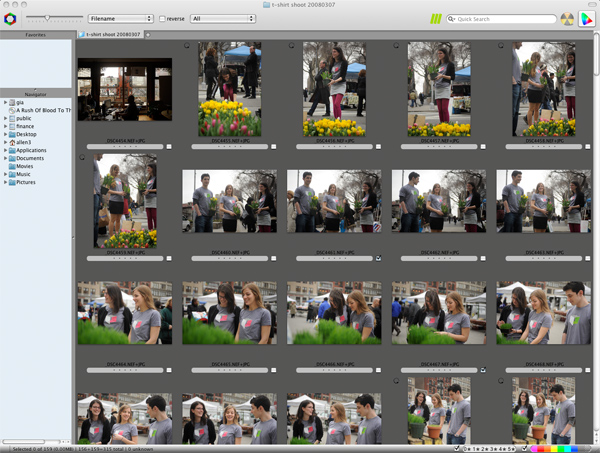Share
Cost of Good Sold: Photo Editing
The thumbnail panel from Photo Mechanic with images from our T-shirt shoot The PhotoShelter Collection has what we refer to as “edited diversity....


The PhotoShelter Collection has what we refer to as “edited diversity.” Although we allow almost any image to be uploaded, each image is reviewed by our team of photo editors with the goal of removing the stuff we don’t think commercial photo buyers will be interested in. The process is a subjective one, we admit, but on the other hand, all of our editors have degrees in photography, and all of them have worked as photo editors prior to landing at PhotoShelter.
But the point of this post isn’t too talk about the subjective. It’s to talk business.
We often hear from photographers who are upset about an image(s) getting rejected and the fact that we don’t include a reason for rejection. So first let me explain how the old stock agencies work. It used to be that in order to even be considered by an agency, you had to submit a body of work of several hundred images. Several hundred really good images to even be considered. If you’ve never had a portfolio review before, you might not really understand what editors consider to be good because in most cases it simply isn’t what you consider to be good.
Then once you’ve submitted the images, it goes into some blackhole where some staff members review it, and a few months later (no kidding), you get back (some) of your stuff. The agency takes the stuff it likes, and returns the stuff they don’t like. There’s no note, there’s no rejection reason, and that’s how it is.
So why is this the case?
When we look at our budgeting, photo editing happens to fall under the category of Cost of Goods Sold (aka COGS). We are in the business of selling photos, and each photo has an incremental cost associated with it to review/edit before it can be sold.
Let’s conservatively estimate that providing a reason for rejection adds 2 seconds to each image. 2 secs could be the time to affix a rejection code like “technical failure,” “aesthetic failure,” etc.
About 110,000 images were uploaded to the PhotoShelter Collection last month. So assuming 2 sec additionally per image, we’re talking 220,000 sec = 3,667 min = 61 hours = 7.6 work days. We’ve just added a week’s additional work per month to the queue.
Let’s assume that an editor makes $40k/year, which seems reasonable for a junior position. If you factor in benefits, taxes, etc, this come to more like $48k/year. With the above calculation, which is 1/4 a full-time head, we’re talking an additional cost of $12,000/year just to add a rejection comment.
You might think that this is a trivial amount, but it’s not. The more popular we become, the more images we receive, the more photo editors we’ll need. Then suddenly, our costs will be too high to support giving the photographer 70% because they wanted a rejection code. And there’s no guarantee that a company’s efficiency will scale linearly as an organization grows. People work hard in a small organization because they feel empowered. But if you are turning screws at GM, you’re out the door when the bell rings.
Microstock (boo! hiss!) companies that edit images don’t provide rejection reasons. No one does. Why? It’s too expensive, especially when you’re selling an image for $1 (and even if you’re only giving the photographer 20% of that $1).
One way to reduce the cost would be to offshore the editing. It’s something that many of the major agencies and wire services have done, but it’s not something that we’re willing to do right now. Sure, you can potentially reduce costs by offshoring editing and programming, but those two functions are core to our company, and if those people aren’t here, then what is our company culture composed of? (Plus that whole nationalism thang).


